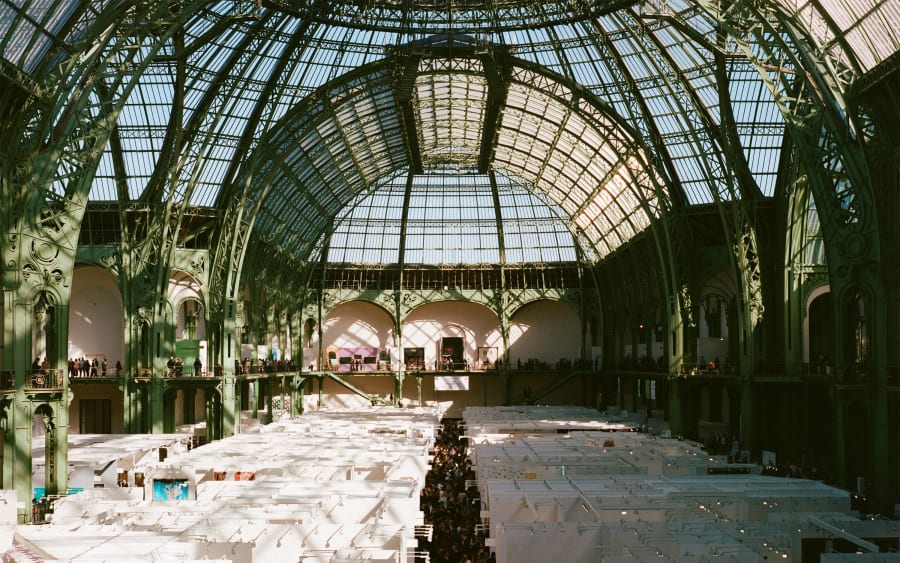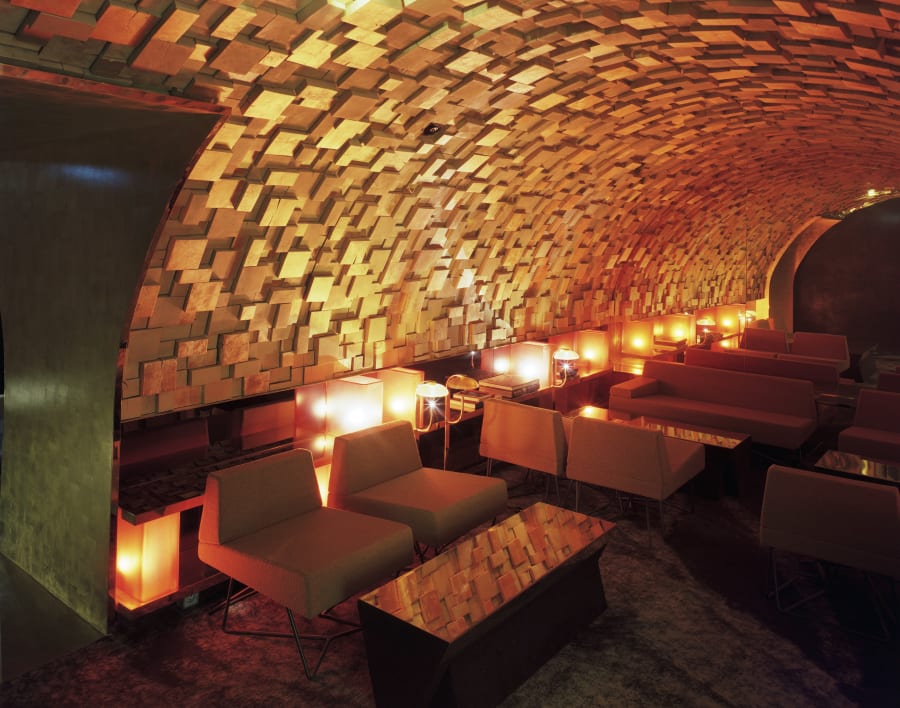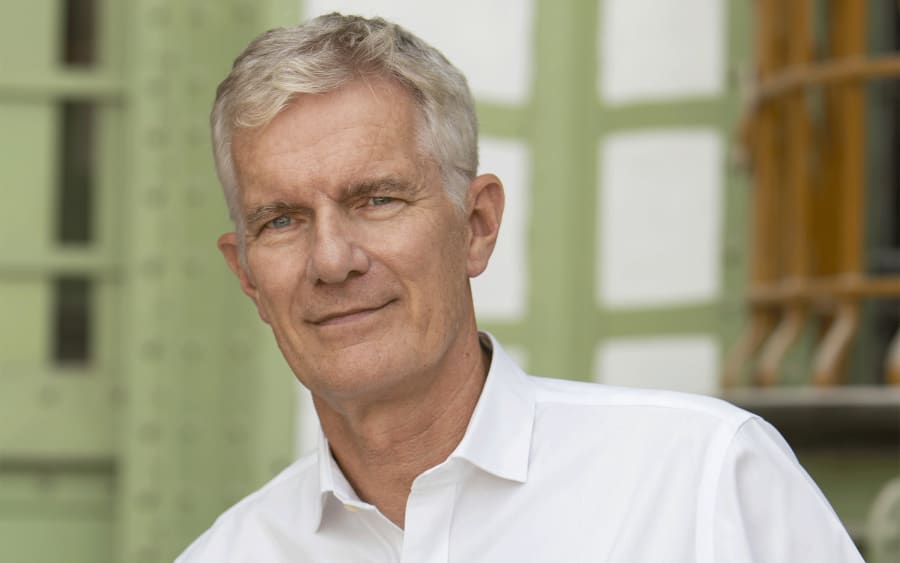At the Grand Palais, the Premise sector 'is a space where definitions dissolve. We question the very nature of the artwork, the exhibition, and the narrative,' explains Art Basel Paris director Clément Delépine. For the 2025 edition, this platform for unusual curatorial projects brings together ten galleries around nine proposals.
Robert Barry (b. 1936, New York)
Presented by Martine Aboucaya (Paris)
Can one experience a work without ever seeing it? A major figure of Conceptual art, Robert Barry transforms the exhibition space into an invisible presence. Under the supervision of curator and art historian, Mathieu Copeland, five non-material works from 1969 are reactivated to deploy their intangible forces: telepathy, magnetism, radiation, and psychic phenomena. Fifty years after they were first created, these pieces are reborn, carrying within them the narratives and experiences of those decades.
Emily Kame Kngwarreye (c. 1914–1996, Alhalker, Australia)
Alan Lynch (1926–1994, San Francisco, CA)
Presented by Château Shatto (Los Angeles)
Emily Kame Kngwarreye and Alan Lynch, though born into very different cultural contexts, both detached themselves from established Western aesthetics. The former, an Australian Aboriginal artist, only began painting late in life. She sought to celebrate her region and her intimate relationship with the land, her ritual gestures transforming into acts of meditation and manifesting a profound connection with nature. The latter, deeply marked by Sōtō Zen, created works on paper in which organic forms and colors translate an interior universe in harmony with the natural world.
Dadamaino (1930–2004, Milan)
Presented by Frittelli arte contemporanea (Florence)
Dadamaino, whose real name was Eduarda Emilia Maino, challenged the conventions of painting. By cutting her canvases, she created voids, transforming the space around the work into a fully-fledged protagonist. Thus, light, volumes, and ‘hollows’ give life to the artist’s ‘Volumi’ (1959–60). Inspired by Lucio Fontana and Piero Manzoni, Dadamaino invented a language which sees the work extend beyond itself and merge with the world outside.
Hector Hyppolite (1894–1948, Saint-Marc, Haiti)
Presented by The Gallery of Everything (London)
In Haiti, in 1945, André Breton discovered Hector Hyppolite. A third-generation voodoo priest, Hyppolite reinvented modern Haitian art by painting divinities, ancestors, and historical figures, integrating rites and symbols. Painted on cardboard or board, his colors tell the story of his island and celebrate the vitality of African culture and its diaspora. Breton emphasized Hyppolite’s uniqueness in Dubuffet’s Almanach de l’Art Brut (1948) and included him in ‘Le Surréalisme en 1947’, the major exhibition he co-organized with Marcel Duchamp at Galerie Maeght in Paris, which marked the movement’s revival after the war.
Janet Olivia Henry (b. 1947, New York)
Presented by Gordon Robichaux (New York) and Stars (Los Angeles)
For Janet Olivia Henry, collecting objects becomes an act of resistance. It denounces hierarchies, questions power relations, and creates multiple narratives. Since the late 1970s, Henry has developed a multidisciplinary practice combining staged photographs, writing, beading, quilting, and soft sculptures. She composes miniature universes, small theatrical scenes populated with dolls, shoes, and everyday objects that tell of her experiences, her artistic encounters, and the social issues of her time.
Liz Deschenes (b. 1966, Boston, MA)
Lucia Moholy (1894–1989, Prague)
Presented by Kadel Willborn (Düsseldorf)
A dialogue spreads across different eras with the silver gelatin photographs of Bauhaus pioneer, Lucia Moholy, and the works of Liz Deschenes, a prominent figure in Post-Conceptual photography. In her work from the 1930s, the former captures light, sculpts volumes, and tames architecture into luminous abstractions that blend personal vision with innovations in design. The latter extends this conversation with her photographic sculptures in Plexiglas from the ‘Blue Wool’ series, in which reflections modulate space according to the angle from which they are viewed. Here, photography becomes living matter in perpetual movement, shaped by the gaze of the audience.
Lee ShinJa (b. 1930, Uljin, South Korea)
Presented by Tina Kim Gallery (New York)
Lee ShinJa draws geometric and abstract forms while exploring the infinite possibilities of textiles. In the 1950s and 1960s, when thread and fabric were still associated with domestic tasks, Lee transformed traditional Korean know-how by experimenting with innovative techniques of embroidery, dyeing, weaving, and tapestry. Her works compose abstract landscapes in which finesse, elegance, and joy interweave, paying homage to her cultural heritage and the ancestral practices passed down through her family. Lee draws her inspiration from childhood memories and shows a profound respect for nature’s cyclical forces.
Ella Bergmann-Michel (1896–1971, Paderborn, Germany)
Presented by Galerie Eric Mouchet (Paris)
Ella Bergmann-Michel trained at the Weimar School of Fine Arts and was one of the few women to join the Bauhaus early on in 1919. Her approach was audacious and experimental, embracing photography, cinema, and painting. Alongside her husband, Robert Michel, and within the framework of the Neues Frankfurt program (1925–30) which aimed to modernize urban planning and social housing, she documented city life and social inequalities. After the war, her works oscillated between Abstract Expressionism and Op Art, and she established a distinctive style which saw movement, light, and space engage in dialogue.
Marie Bracquemond (1840–1916, Argenton-en-Landunvez, France)
Presented by Pavec (Paris)
Overshadowed during her lifetime by her husband, Marie Bracquemond emerges today as a true pioneer. Alongside Berthe Morisot and Mary Cassatt, she is one of the grandes dames of the Impressionist movement. Pavec presents a collection of still lifes, portraits, and landscapes created between 1874 and 1895, in which each painting reflects the empathetic gaze of the artist. Under Bracquemond’s brush, gardens, interiors, and familiar faces transform into visual poetry, and the intimate becomes a universal language.
Art Basel Paris will take place from October 24 to 26, 2025, at the Grand Palais. Discover the participating galleries of the Premise sector here.
Yasmin Sarnefors is a writer based in Paris and Art Basel's Content & Communications Assistant.
Caption for header image: Lee Shinja, Spirit of Mountain, 1996. Courtesy of the artist and Tina Kim Gallery. Photograph by Sebastiano Pellion di Persano.
English translation: Art Basel.
Published on September 15, 2025.


